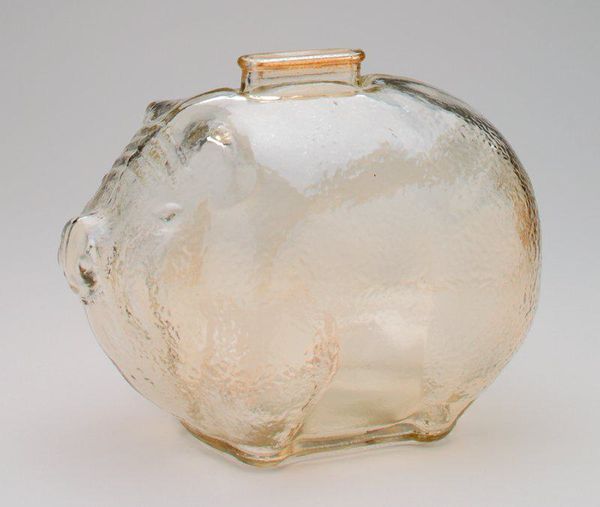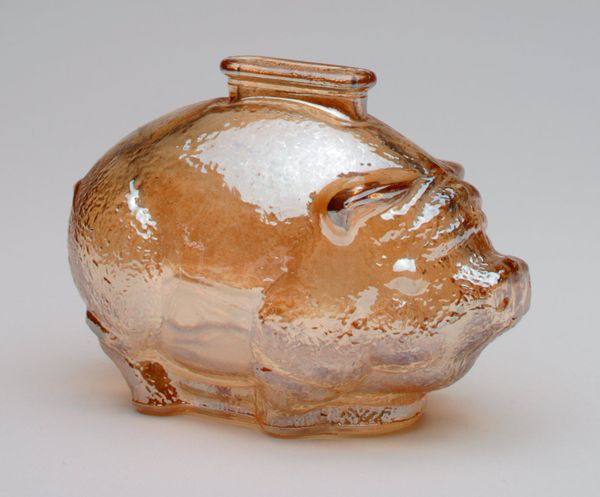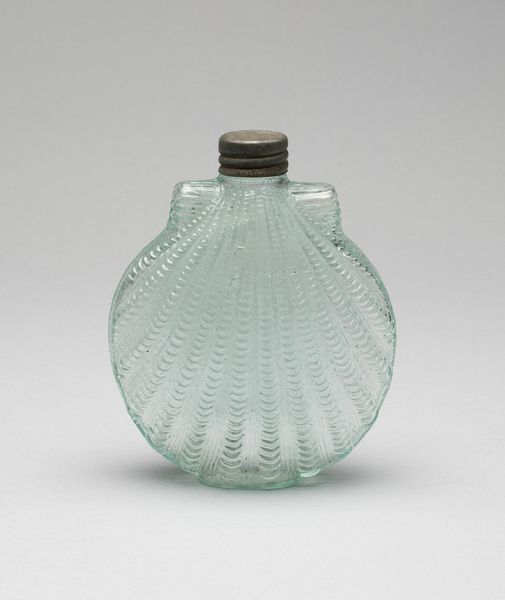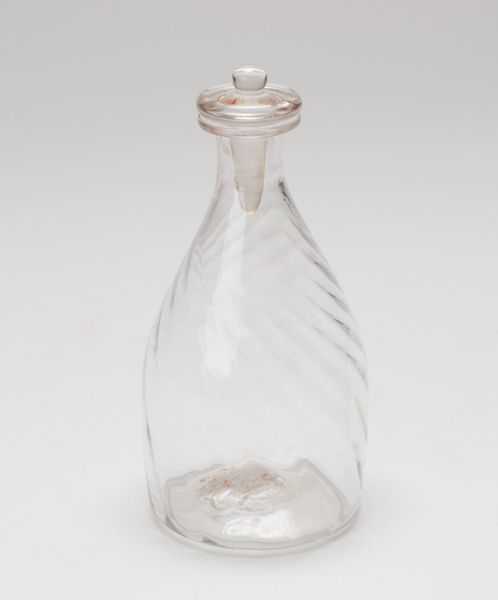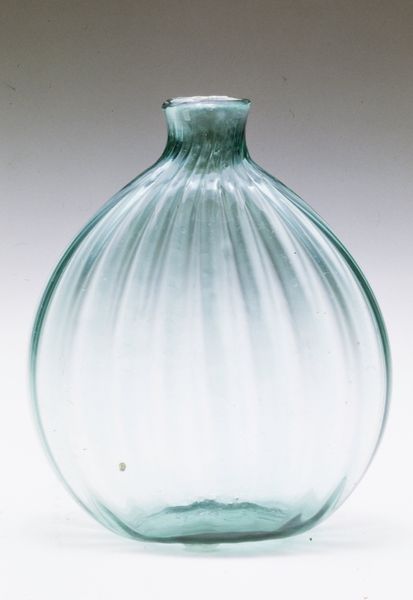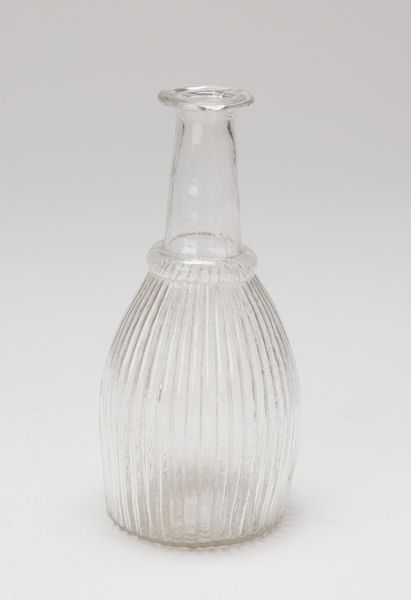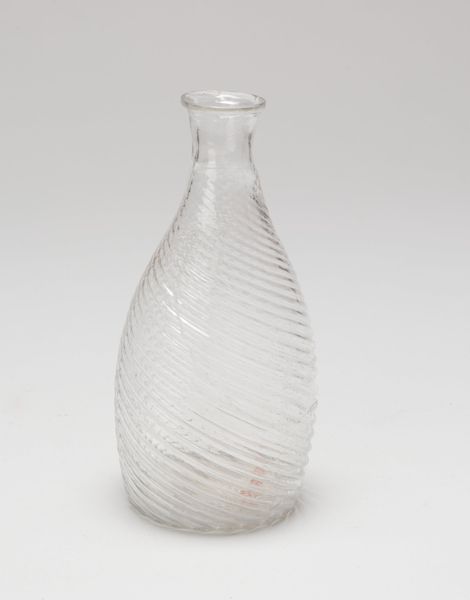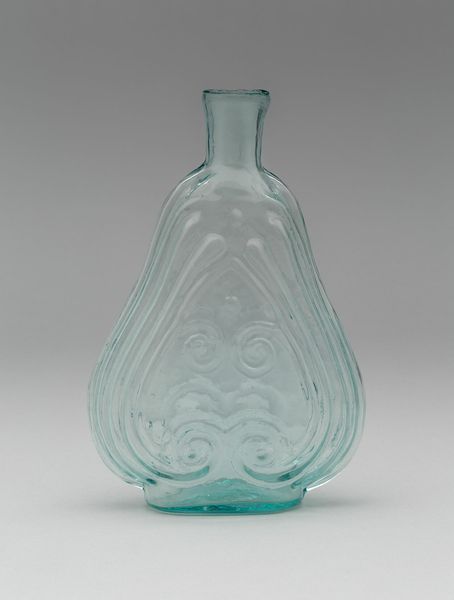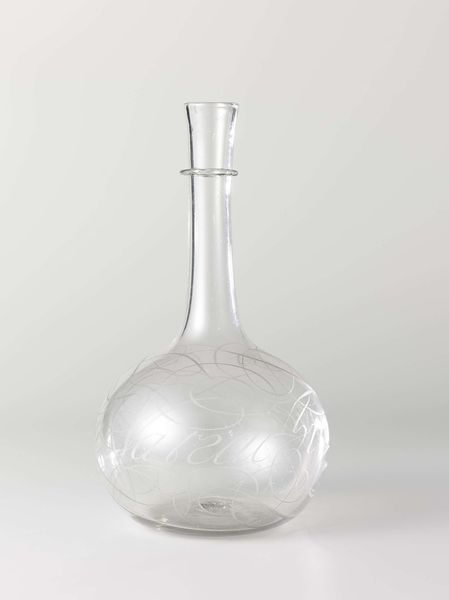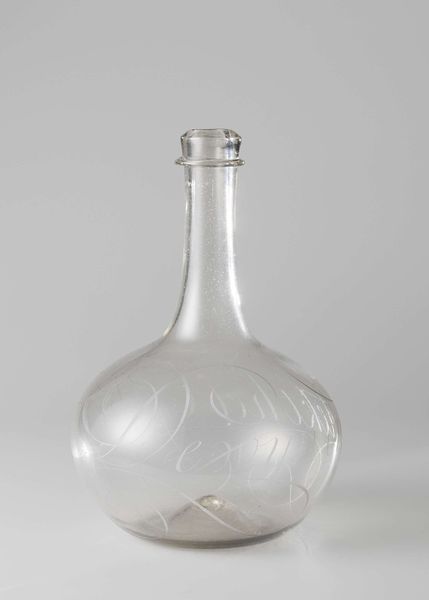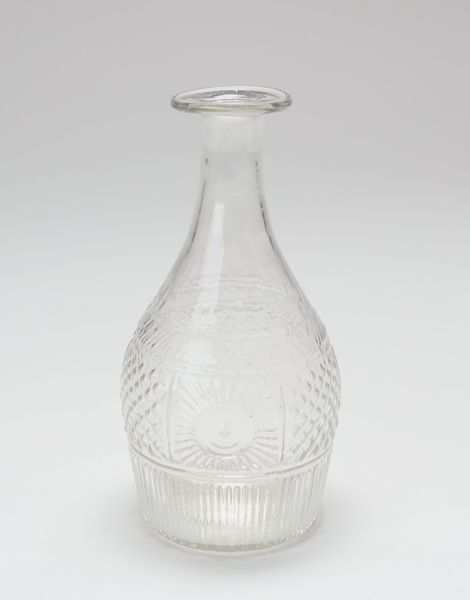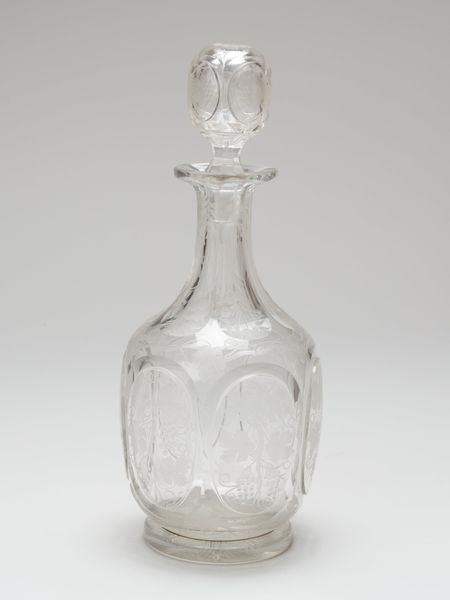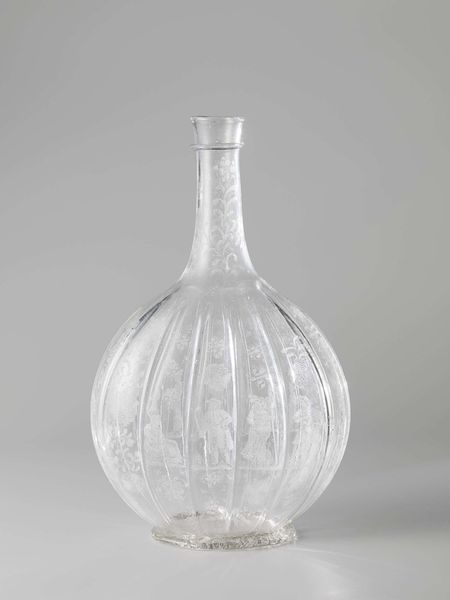
-Piggy Bank (small)- still bank c. 20th century
0:00
0:00
found-object, glass, sculpture
#
found-object
#
glass
#
sculpture
#
decorative-art
Dimensions: 2 7/8 x 2 3/8 x 4 3/8 in. (7.3 x 6.03 x 11.11 cm)
Copyright: No Known Copyright
Curator: Immediately striking, isn't it? There’s a fragility to this form despite its intended purpose. It is a clear glass Piggy Bank dating from the 20th century, a small, decorative piece attributed to the Anchor Hocking Glass Company. Editor: Fragility is the right word. It gives me a sense of transience. Even its color, or lack thereof, makes it seem as though it could almost disappear before your eyes. It is an uncanny feeling to attach to what is essentially a symbol for savings. Curator: Well, think about the cultural landscape in which these glass banks emerged. Saving became democratized and popularized throughout the 20th century. What better way to visualize aspiration and delayed gratification than through this clear vessel where we can see coins accumulate? Editor: It makes the implicit, explicit, doesn't it? But there’s more here than fiscal prudence. Pigs themselves, regardless of material, are potent symbols cross-culturally: abundance, luck, domesticity. Is it not odd to slaughter a pig with currency when we invest its likeness with such symbolic importance? Curator: Interesting connection! It could reflect evolving anxieties about economic security—seeing money "safe" but essentially inaccessible without “killing” the vessel. Of course, breaking the glass bank also suggests social mobility, freedom from saving for its own sake. It suggests new models and meanings behind economy, even at the personal level. Editor: Or perhaps, this act reflects our complicated, almost primal relationship with currency and possessions. Money, by its nature, is elusive, so there is an uncomfortable sense of impermanence already built into what is held within. Perhaps, in a darkly funny way, this simple still bank reminds us that savings are equally temporary. Curator: Well, regardless of the "why", looking at this object helps reflect larger trends, cultural values attached to money and consumerism within broader historical context. It really highlights how economic behaviour has developed in lockstep with new technologies and popular ideals. Editor: Absolutely, and at a smaller scale, too. Next time you smash one open, consider its glass ghost and cultural weight!
Comments
No comments
Be the first to comment and join the conversation on the ultimate creative platform.
